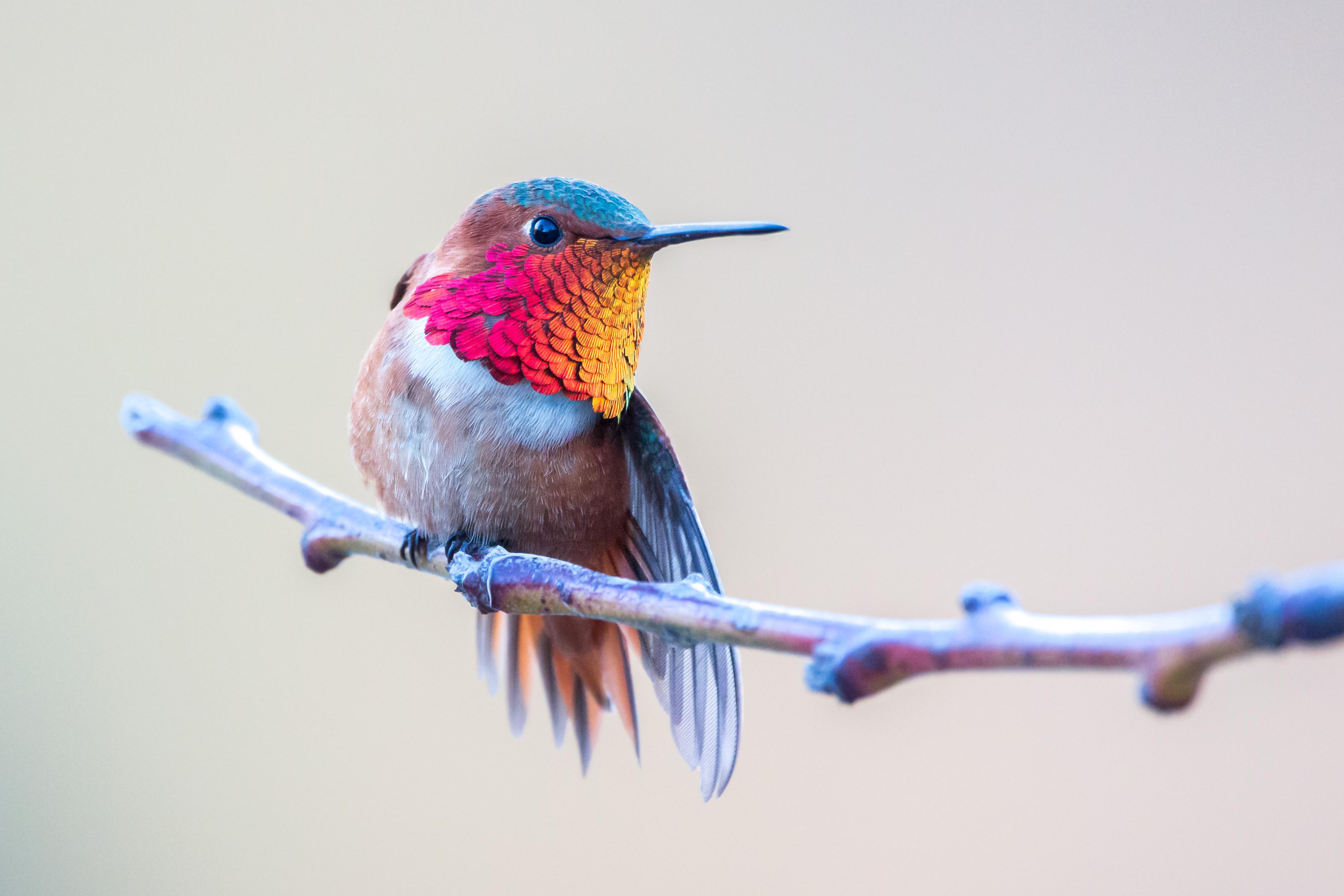Identify male, female and juvenile Allen’s hummingbirds. Learn about their call, the range where you can spot this species, and their yearly migration.
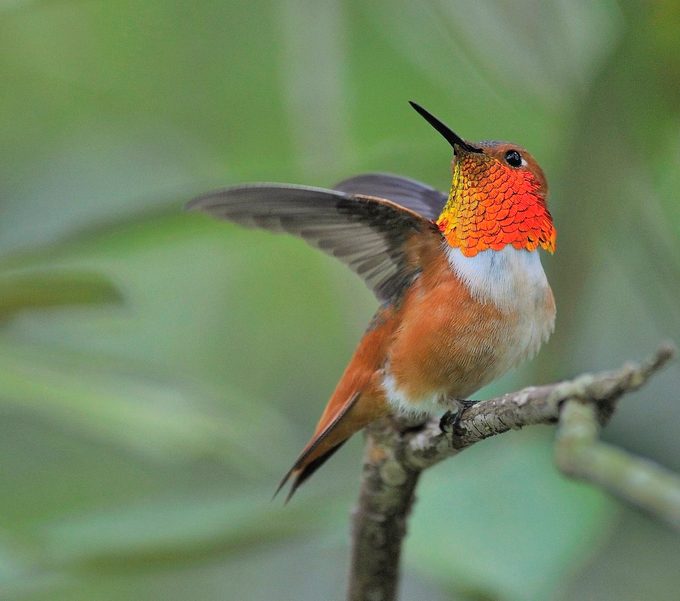
Why Is This Species Named Allen’s Hummingbird?
Named for Charles Andrew Allen, a California taxidermist, the bird was first classified in 1877. The second smallest hummingbird after the Calliope, an Allen’s hummingbird is about 3 inches long, slightly smaller than Anna’s hummingbirds found in the same gardens. Allen’s are similar to rufous hummers, but that species nests farther north.
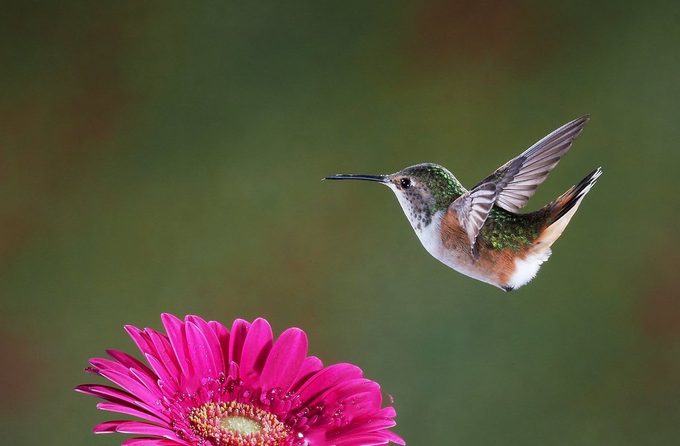
Male vs Female Allen’s Hummingbirds
The male has warm rusty-orange flanks, breast band, face, neck, and tail, as well as a green back and crown. They often have a rusty-orange rump, and sometimes show rusty-orange at the nape. A brilliant metallic-orange gorget can appear bright orangish scarlet to deep coppery-green. Look for a clean white breast band or patch below the gorget.
Was the Lucifer hummingbird really named after the devil?
The female is green above, white below, with light rufous-orange flanks and rump. A narrow, easily overlooked orangish eyebrow stripe reliably separates a female Allen’s from the paler female broad-tailed hummingbird.
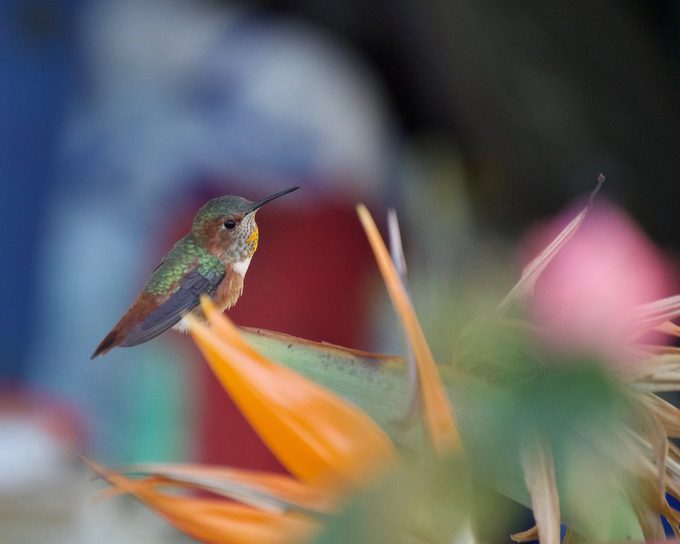
How to Identify a Juvenile Allen’s Hummingbird
Young Allen’s look incredibly similar to females but are duller overall, and often scaled green on the back. Look closely at their throats—a tiny patch of red-orange feathers signifies a female.
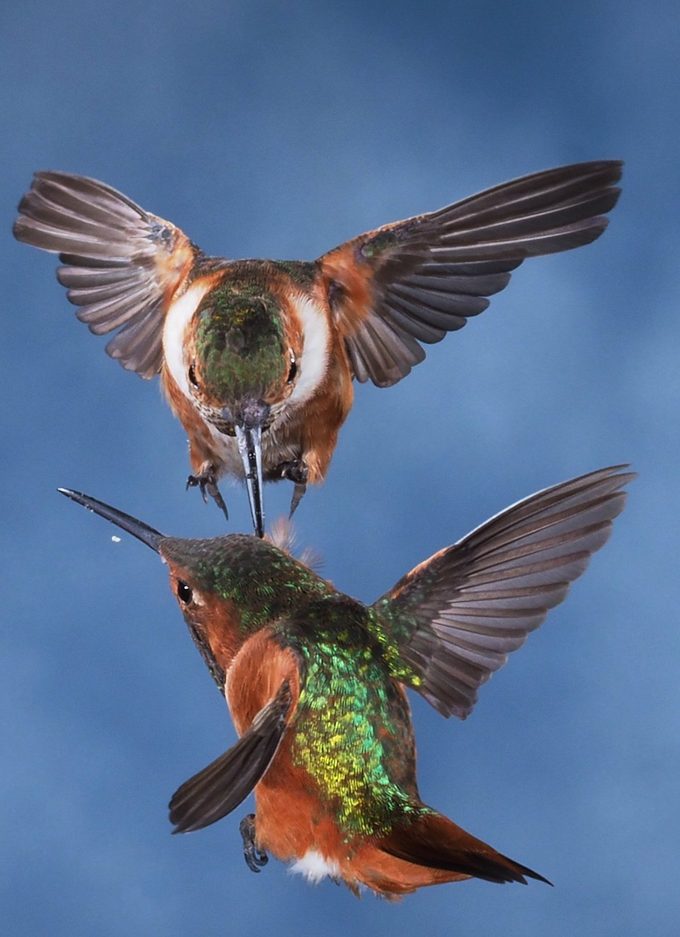
Allen’s Hummingbird Call and Behavior
The male Allen’s hummingbird engages in a distinctive courtship display flight. To court females, males dive at a high speed while making a buzzing sound with their wing feathers or a shriek with their pointed tail feathers, then fly side to side.
The display begins with a series of pendulum flights in which he swings rapidly back and forth in a shallow arc, covering about 25 feet horizontally in each swing, uttering a buzzing note and ending each arc with a flare of the tail and a high-pitched rattle. These pendulum flights, five to 15 in a row, occur 6 to 8 feet or so above the female. Often the final arc transitions into a high-angled climb and then a high-speed plunge, culminating above the female.
Males are extremely territorial. These feisty winged Napoleons will chase away a hawk if it flies close to a favored food source or prospective mate. In addition to the male’s courtship vocalizations, Allen’s hummers make a variety of calls similar to those of the rufous, including chip notes and aggressive rattling sounds used in confrontational situations.
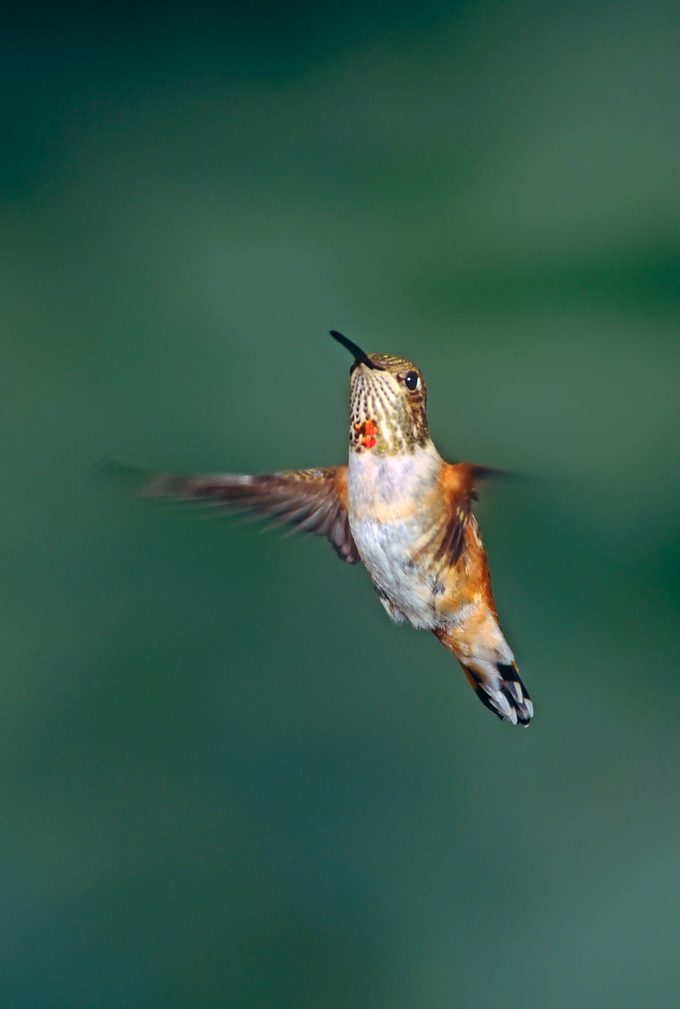
Allen’s Hummingbird Nest
Males mate with multiple females, then a female builds her nest from plant fibers, lichens, moss, spider silk and animal hair. The nest stretches as her one or two chicks hatch and grow. She continues to feed them another week or two after they fledge.
How to Attract Allen’s Hummingbirds
“If an Allen’s hummingbird really likes your yard, it will come back year after year. They are very site-specific,” says Barbara Monahan, whose property in Santa Cruz, California, was a banding site for 3,000 hummingbirds for the nonprofit Hummingbird Monitoring Network.
To attract these fliers, Barbara includes Grevillea lanigera, also called woolly grevillea, among her hummingbird-friendly plants. “The Allen’s bills are smaller, so the flowers can’t be too long. They can’t dig into a long trumpet vine,” she says.
The usual hummingbird tricks draw in these birds, too. Set out a sugar-water feeder and a source of running water to see more of them. Barbara emphasizes having a few feeders in different locations because
Barbara places feeders in prime locations with sheltered perches nearby so these high-energy fliers can rest after feeding. She also sets out chunks of fruit to attract gnats, a dietary staple for hummingbirds. Allen’s also pluck bugs and spiders off spiderwebs, so “don’t be too aggressive cleaning your eaves,” Barbara says. She also recommends a water dish that’s about 1 to 2 inches deep, is 12 to 20 inches wide, and has a constant drip source and a flat rock in it for an easy out. “Allen’s will skitter along the top of the water. Think water skiing!” says Barbara, who also sets up a mister during the summer. “Other birds like it, too.”
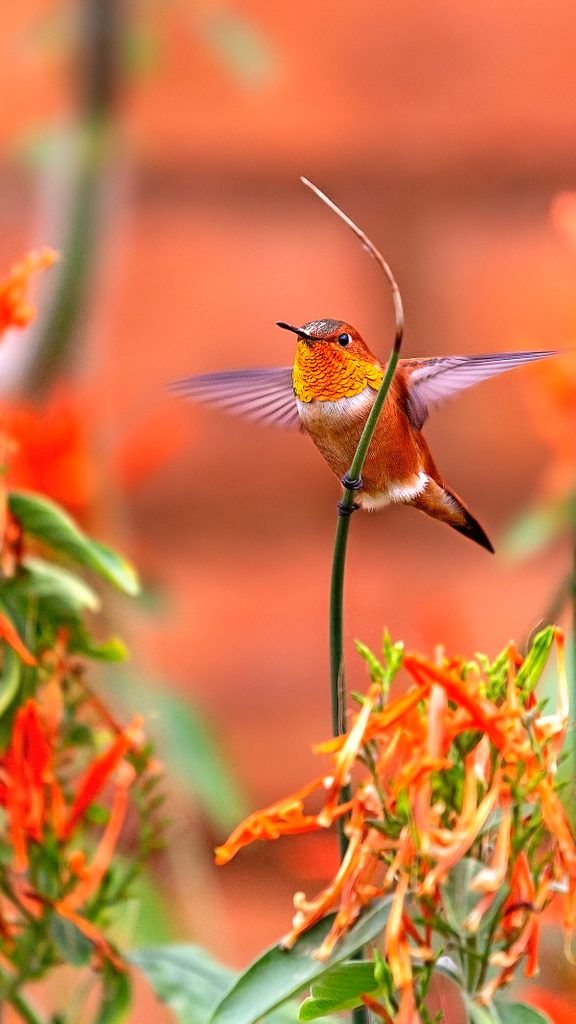
Allen’s Hummingbird Habitat and Range
The Allen’s hummingbird breeds in summers along the Pacific coast from southern Oregon to San Diego County, California. They are most common in coastal scrub and coastal residential areas, from urban to rural. This species is especially widespread from southern California to the Bay Area, becoming somewhat less common northward and as the distance from the coast increases. Sightings are uncommon to rare in inland California.
During the breeding season, you’re more likely to spot male Allen’s near scrubby plants, but females seek out thicker cover once nesting.
Do Allen’s Hummingbirds Migrate?
